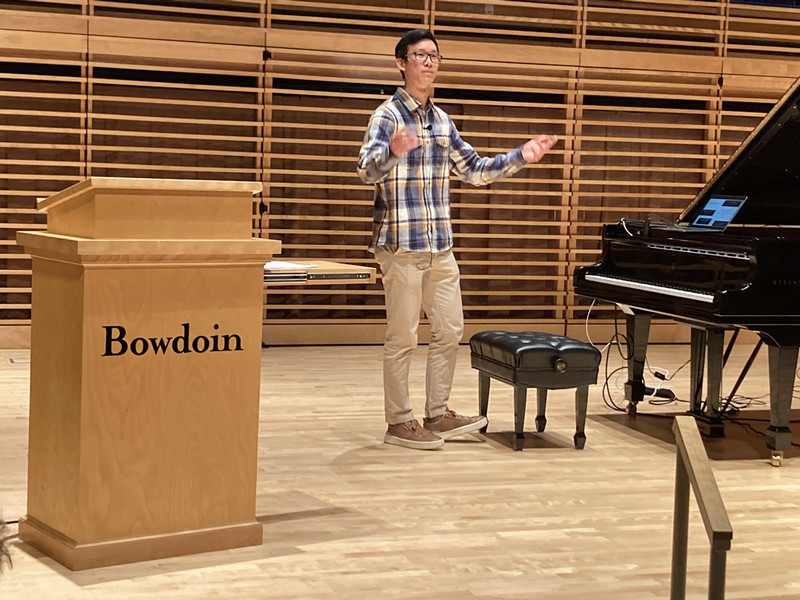New Course to Introduce Students to World of Digital Humanities

Crystal Hall and Mohammad Irfan
A Bowdoin computer science professor and a digital humanities professor are teaming up to teach a new interdisciplinary digital and computational course next fall. The class will tackle two major projects. To begin, students will recreate what General Joshua Chamberlain could see from Little Round Top in 1865. Then they will explore the notion of identity in the age of social media.
The course, Introduction to Digital and Computational Studies, will be offered by Crystal Hall, visiting assistant professor of digital and computational studies, and Mohammad Irfan, visiting assistant professor of computer science. Basing the course around the two projects — one historical and one contemporary — the two professors will teach students how to use computers and digital tools to answer questions in the humanities, social sciences and the life sciences.
Students will learn the basics of the Python programming language as well as how to do spatial analysis with ArcGIS and environmental modeling. They will undertake large-scale analysis of texts, extract meaning from “big data,” and make maps that show not just geography, but history as well.
The New York Times describes the field of digital humanities as “a growing movement…to harness digital technology for cultural analysis.” Computers can scan and analyze huge volumes of text, images, maps and other data, detecting connections and patterns in a way no human scholar can.
The first half of the class will be devoted to figuring out what Joshua Chamberlain could see on Little Round Top at the Battle of Gettysburg. Hall said historians still have questions about how this battle, which turned the course of the Civil War, played out — questions that might be answered with modern-day tools.
Using ArcGIS to pull together geographical and weather data from that time, the students will create a plausible viewshed for Chamberlain and his soldiers. If it was a rainy spring, they might assume the trees had more obstructing foliage, for example. They will also use the Chamberlain Archive in the Hawthorne-Longfellow’s Special Collections to practice encoding and analyzing text digitally. “We will be looking for evidence for how he was prepared to read the movements of soldiers on the battlefield,” Hall said.
In the second part of the course, students will analyze identity and how we present ourselves in the hyper-connected age of Facebook, Twitter and Instagram. For one of the assignments, the class will download email from their personal accounts and scan it with a digital tool to look for their own patterns and habits. They’ll also conduct image analyses on their selfies.



